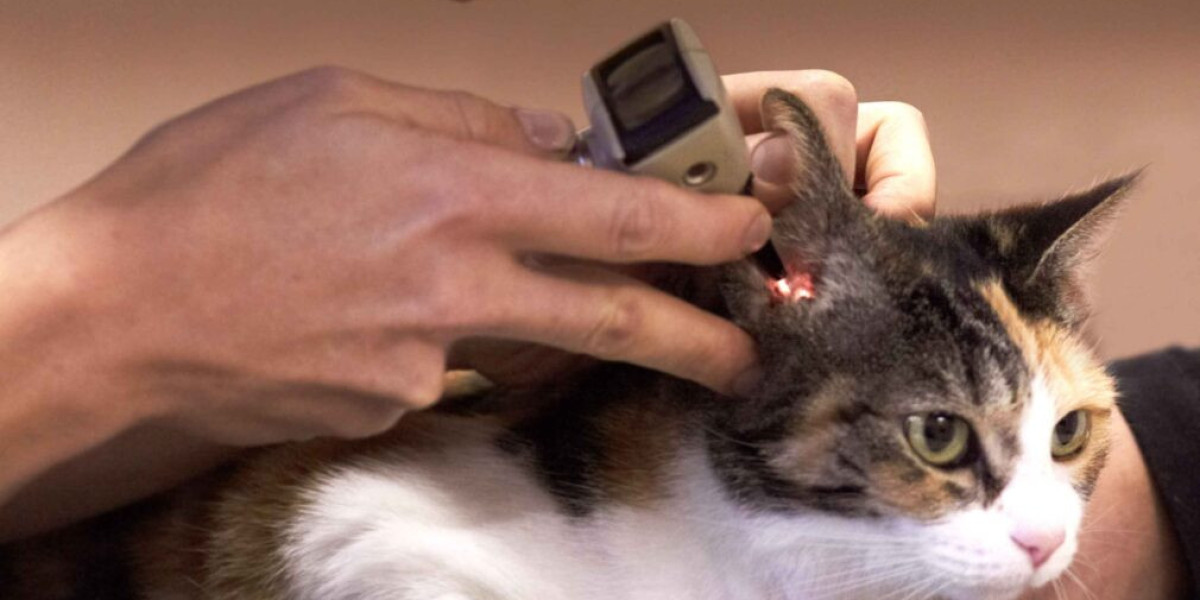When your pet is hurting whether it’s from surgery, arthritis, or a chronic condition you want fast, effective relief without harsh medications or invasive treatments. That’s where cold laser therapy for dogs and cats comes in. This advanced, non-invasive treatment is gaining popularity in veterinary medicine for its ability to reduce pain, accelerate healing, and improve overall quality of life.
What Is Cold Laser Therapy?
Cold laser therapy, also known as low-level laser therapy (LLLT), uses specific wavelengths of light to stimulate the cells in your pet’s body. These light waves penetrate the tissue and trigger cellular activity that promotes natural healing, reduces inflammation, and increases blood flow.
Unlike surgical or thermal lasers, cold laser therapy does not cut or burn the tissue. It’s completely painless and doesn’t require sedation, making it ideal for pets who need frequent treatment or who cannot tolerate more aggressive interventions.
Veterinary hospitals like Kainer Veterinary Hospital use this therapy as part of a broader treatment plan tailored to your pet’s condition, age, and individual needs.
How Cold Laser Therapy Works in Simple Terms
The process is surprisingly simple and safe. During treatment, your veterinarian or a trained technician uses a handheld laser device that is applied directly to the affected area. The light energy from the laser penetrates the skin and reaches the underlying tissues, where it interacts with cells and triggers a process known as photobiomodulation.
This process stimulates the mitochondria (the powerhouse of the cell), which leads to:
- Reduced inflammation
- Accelerated tissue repair
- Increased circulation
- Enhanced production of pain-relieving chemicals
The result is faster healing and noticeable pain relief often after just a few sessions.
Common Conditions Treated with Cold Laser Therapy
Cold laser therapy is a versatile tool in veterinary care and can be used for a wide range of health issues. It is especially effective in helping pets recover from surgery, manage chronic pain, and heal from injuries.
Here are some of the most common uses for cold laser therapy in dogs and cats:
Arthritis and joint pain
Pets with osteoarthritis benefit significantly from cold laser treatments, which reduce inflammation in joints and improve mobility without medication.
Post-surgical recovery
Laser therapy helps surgical wounds heal faster and with less discomfort, minimizing downtime and complications.
Soft tissue injuries
Sprains, strains, and muscle injuries can all be treated with laser therapy to reduce swelling and promote faster healing.
Back pain or disc disease
Pets suffering from intervertebral disc disease or spinal inflammation often experience relief after several sessions.
Skin issues and infections
Laser therapy supports healing in wounds, abscesses, lick granulomas, and certain skin infections by boosting tissue regeneration.
Dental healing
It can also be used after dental procedures to minimize inflammation and discomfort in the gums and oral tissues.
What a Cold Laser Session Looks Like
Most laser therapy sessions take just 10 to 20 minutes. Your pet will typically lie down or sit comfortably while the vet or technician gently moves the laser wand over the treatment area.
There is no need for anesthesia or shaving the fur. Most pets actually enjoy the sessions because they find them soothing. Some even fall asleep during treatment. The laser produces a mild warming sensation that feels relaxing to many animals.
Depending on your pet’s condition, your veterinarian may recommend multiple sessions per week initially, followed by occasional maintenance treatments as needed.
Is Cold Laser Therapy Safe?
Yes, cold laser therapy is extremely safe when performed by trained veterinary professionals. There are no known long-term side effects, and it can be safely combined with other therapies, including medication, acupuncture, physical therapy, or surgery.
It’s also suitable for pets who are older, sensitive to medications, or unable to undergo anesthesia for medical reasons. This makes it a particularly valuable option for senior pets and those with chronic conditions.
Your vet will conduct a full evaluation to determine if your pet is a good candidate and create a treatment plan that aligns with their overall health goals.
How Soon Can You Expect Results?
Many pets show noticeable improvement after just one or two sessions. For chronic issues like arthritis, you may see gradual progress over several treatments. The key is consistency each session builds on the benefits of the last, making regular treatments more effective over time.
Owners often report that their pets move more easily, seem more playful, and experience less discomfort during daily activities within the first week of starting therapy.
Why Pet Owners Love Cold Laser Therapy
One of the biggest reasons pet owners choose laser therapy is that it offers real results without the risk of side effects associated with long-term medication. It’s noninvasive, painless, and compatible with nearly every treatment plan.
For dogs who can no longer jump onto the couch or cats who’ve stopped playing, cold laser therapy can restore not just mobility but also happiness and energy. And because it’s performed in a calm, low-stress environment, pets don’t dread coming in for treatment.
Why Choose a Veterinary Hospital for Laser Therapy
While some pet wellness centers offer laser services, the best outcomes come from a licensed veterinary hospital where your pet’s treatment is overseen by a medical team. Facilities like Kainer Veterinary Hospital use advanced equipment and individualized treatment protocols to make sure your dog or cat gets the right care every time.
Plus, when laser therapy is paired with other medical evaluations, lab work, and expert diagnostics, you get a full picture of your pet’s health not just symptom relief.
When to Talk to Your Vet About Cold Laser Therapy
If your pet has recently had surgery, is living with chronic joint pain, or seems slower or stiffer than usual, now may be the right time to explore laser therapy. The earlier you start, the sooner your pet can begin healing.
Talk to your vet if you’ve noticed:
- Limping or stiffness after activity
- Trouble getting up or down stairs
- Pain or tenderness in a specific area
- Wounds or infections that are slow to heal
- Reduced appetite or energy levels due to discomfort
Your veterinarian will assess your pet’s condition and explain how laser therapy fits into their long-term wellness plan.
Give Your Pet the Healing Power of Light
Modern veterinary care isn’t just about treating illness it’s about supporting healing, comfort, and quality of life. Cold laser therapy is a cutting-edge tool that does exactly that, providing gentle yet powerful relief for pets who deserve to feel their best.
Whether your pet is recovering from an injury, struggling with arthritis, or simply needs extra support to stay active and happy, cold laser therapy could be the natural, effective solution you’ve been looking for.
Ready to Help Your Pet Feel Better, Faster?
Give your pet a pain-free path to healing. Schedule a consultation with Kainer Veterinary Hospital today to find out how cold laser therapy can restore movement, comfort, and joy to your dog or cat starting now.














